#TemperatureControlled
Explore tagged Tumblr posts
Text
Cold Chain Packaging Market Poised for Transformation with Emerging Technologies and Eco-Friendly Materials
The cold chain packaging market is experiencing robust growth as industries demand more efficient and reliable temperature-sensitive logistics solutions. Cold chain packaging refers to systems and materials used to maintain a consistent low-temperature range for perishable products during storage and transportation. It plays a pivotal role in preserving the integrity of products such as pharmaceuticals, food and beverages, chemicals, and biological samples.

Rising Demand in Key Industries
The primary driver behind the growth of the cold chain packaging market is the increasing global demand for temperature-controlled pharmaceuticals and biologics. With the rise in chronic diseases and the expansion of biopharmaceuticals, there is a pressing need for secure and reliable cold chain systems to maintain product efficacy and safety. The COVID-19 pandemic further amplified this need, showcasing the importance of efficient cold chain logistics in vaccine distribution.
In the food and beverage industry, globalization of trade and shifting consumer preferences toward fresh and organic products have necessitated high-performance cold chain packaging. Perishable foods like dairy, meat, seafood, and frozen goods require stable temperature environments to prevent spoilage, maintain quality, and comply with stringent food safety regulations.
Innovation in Packaging Materials and Technology
Technological advancements are playing a crucial role in the evolution of cold chain packaging. The development of phase change materials (PCMs), vacuum insulated panels (VIPs), and smart packaging with temperature indicators and GPS tracking have revolutionized the way sensitive goods are stored and transported. These technologies help companies monitor temperature in real-time and mitigate risks during transit, ensuring product safety and reducing losses.
Sustainable and reusable cold chain packaging solutions are also gaining traction. With increasing environmental concerns and regulations on plastic use, companies are adopting eco-friendly packaging materials made from recycled content or biodegradable polymers. Reusable insulated containers, along with active and passive refrigeration systems, are becoming standard in many cold chain operations to minimize waste and optimize cost-efficiency.
Market Segmentation and Regional Insights
The cold chain packaging market can be segmented by product type, material, application, and geography. Popular product types include insulated containers and boxes, refrigerants (such as gel packs and dry ice), labels, and temperature monitoring devices. Materials used range from polystyrene foam and polyurethane to corrugated fiberboard and advanced insulation films.
Geographically, North America holds a significant share of the market due to its established pharmaceutical and processed food industries, along with a strong regulatory framework. Europe follows closely, driven by stringent quality and safety standards. However, the Asia-Pacific region is projected to grow at the highest CAGR, owing to rising healthcare investments, increasing food exports, and expanding cold storage infrastructure in countries like China and India.
Challenges and Opportunities
Despite the promising outlook, the cold chain packaging market faces several challenges. High initial investment and maintenance costs for temperature-controlled packaging systems can deter small and medium-sized enterprises. Inconsistent infrastructure in developing economies, along with varying regulations across regions, also hinders market expansion.
However, these challenges present opportunities for innovation and collaboration. Companies are investing in R&D to develop low-cost, high-efficiency packaging alternatives. Partnerships between packaging manufacturers, logistics providers, and technology firms are creating integrated cold chain ecosystems. Furthermore, digitalization and automation are enhancing traceability and compliance, thereby improving overall supply chain efficiency.
Future Outlook
The future of the cold chain packaging market looks promising, with projections indicating consistent growth through 2030. Increasing globalization, urbanization, and online grocery and pharmaceutical deliveries are expected to further drive demand. As companies strive to meet regulatory compliance, reduce waste, and improve sustainability, innovation in materials and smart packaging technologies will remain at the forefront.
Emerging trends such as blockchain for enhanced traceability, AI for demand forecasting, and the use of IoT sensors for real-time monitoring will likely shape the next generation of cold chain packaging. Governments and private sector players must work collaboratively to strengthen infrastructure and standardize practices globally.
In summary, the cold chain packaging market is evolving rapidly in response to changing industry needs, consumer expectations, and environmental concerns. By embracing technological advancements and sustainable practices, the industry is set to meet the growing demand for safe and efficient cold chain logistics worldwide.
#ColdChain#ColdChainPackaging#ColdChainLogistics#TemperatureControlled#PharmaLogistics#FoodLogistics
0 notes
Text
Cold Storage Warehouse Sydney | Secure & Reliable Temperature-Controlled Solutions
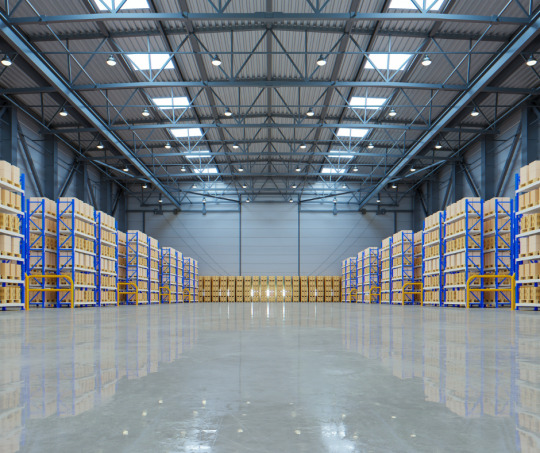
If you’re looking for a reliable cold storage warehouse in Sydney, Dardania offers the ideal solution. Our state-of-the-art facilities are designed to keep your perishable goods at optimal temperatures, ensuring freshness and quality throughout storage.
From food and beverages to pharmaceuticals and cosmetics, our cold storage services cater to various industries with strict hygiene and compliance standards. With 24/7 monitoring, temperature tracking, and advanced security, your inventory is always in safe hands.
Whether you require short-term or long-term storage, our flexible solutions are tailored to meet your business needs. We also offer seamless integration with our refrigerated transport services, allowing for smooth end-to-end cold chain logistics.
Partner with Dardania for trusted cold storage in Sydney. Contact our team today to find out how we can support your business.
#ColdStorageSydney#TemperatureControlled#RefrigeratedStorage#ColdChainLogistics#PerishableGoods#PharmaStorage#FoodStorageSolutions#WarehouseSydney#LogisticsAustralia#DardaniaLogistics#SupplyChainSolutions#ColdChainExperts
0 notes
Text
Pack Rat Mini Storage
Secure Climate Controlled Storage in Neenah & Appleton WI
Looking for dependable, secure, and climate-controlled self storage in Neenah or Appleton, WI? Pack Rat Storage offers exactly what you need. Our storage units are ideal for protecting your valuable belongings from extreme temperatures and humidity. We offer month-to-month rentals, computerized gated access, and pest-controlled units to give you total peace of mind.


#SecureClimateControlledStorage#ClimateControlledStorage#StorageSolutions#SecureStorage#TemperatureControlled#SelfStorage#StorageUnit#HomeOrganization#Decluttering#MovingStorage#SafeStorage#ClimateProtection#WaterDamage#HumidityControl#StorageTips#PersonalStorage#IndoorStorage#StorageMadeEasy#ProtectYourBelongings
0 notes
Text
0 notes
Text
Blood Bank Refrigerator 268 L

Labtron Blood Bank Refrigerator, an upright microprocessor-controlled unit, offers a 268 L capacity with a 2–6°C temperature range. It features advanced air cooling, built-in sensors, a robust alarm system, organized storage with nine blood baskets, and an RS485 interface for remote alarms.
0 notes
Text
Last-Mile vs. Hub-to-Distributor: Decoding Healthcare Cold Chain Logistics with Cardinal Health, Envirotainer, FedEx & More!
Investment opportunities in healthcare cold chain logistics as of July 2024 | Comparison of Last-Mile Delivery and Hub-to-Distributor models, highlighting growth projections, emerging trends like blockchain integration and AI, and innovations
Healthcare Cold Chain Logistics: Last-Mile Delivery vs. Hub-to-Distributor – The Investment Opportunities The healthcare cold chain logistics market is experiencing significant growth, driven by the increasing demand for temperature-sensitive pharmaceuticals, vaccines, and biologics. Within this market, two key delivery segments dominate: Last-Mile Delivery and Hubs-to-Distributor. As an…

View On WordPress
#BlockchainIntegration#ColdChainSolutions#Digitalization#HealthcareInnovation#HubtoDistributor#LastMileDelivery#LogisticsTechnology#MedicalLogistics#PharmaInvestment#PharmaLogistics#PharmaSupplyChain#SupplyChainManagement#TemperatureControlled#TemperatureMonitoring
0 notes
Text



ECCHI Figure- Kitsune Mimi-san 1/5-Anime Statue/Temperature-Controlled Discoloration/Adult Pretty Girl/Collectible Model/Painted Character Model/Doll 32cm/12.6in
#EcchiFigure#KitsuneMimisan#AnimeStatue#TemperatureControlled#PrettyGirlFigures#CollectibleModel#PaintedCharacter#AdultCollectibles#FigureCollector#ModelKit#FantasyFigures#AnimeMerchandise#RareFinds#FigurePhotography#SculptureArt#LimitedEdition#OtakuCollection#AnimeToys#UniqueGifts#PremiumFigures#HandPainted#FigureAddict#CharacterStatue#PrettyGirlModel#FantasyArt#CollectibleArt#AnimeLovers#ToyPhotography#AdultModel#FigureEnthusiast
0 notes
Text

Our temperature-controlled shipping solutions ensure the safe and compliant transportation of perishable goods, fresh produce, and temperature-sensitive medications. We've got the right cooling methods to protect your shipments.
#agamholdings#AHL#TemperatureControlled#Trucking#FreshDelivery#LogisticsMasters#QualityService#CargoCare#TruckingBenefits#SafetyFirst#truckracing#racetrailer#loaded#trucking#racetruck#truckers#freighttruckingcompany#novascotia#shippingservices#ontario#quebec#newbrunswick#alberta#saskatchewan#truckinglife#britishcolumbia#manitoba
0 notes
Text

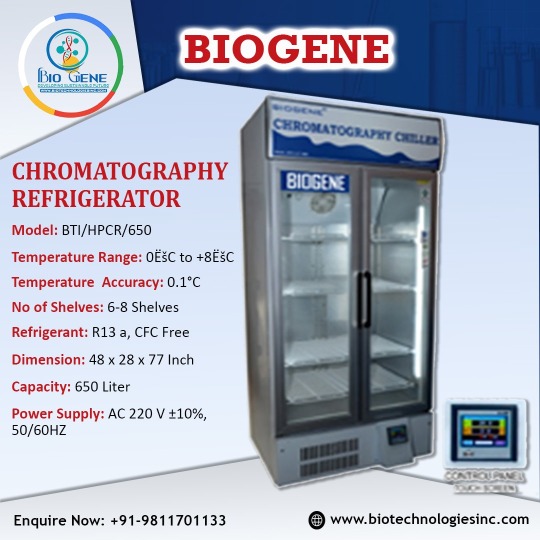
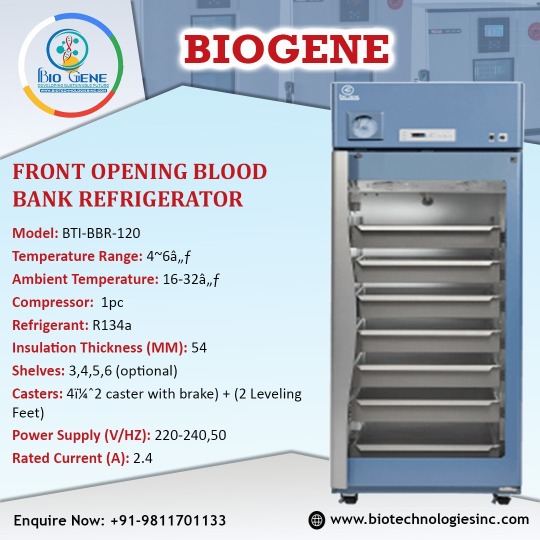
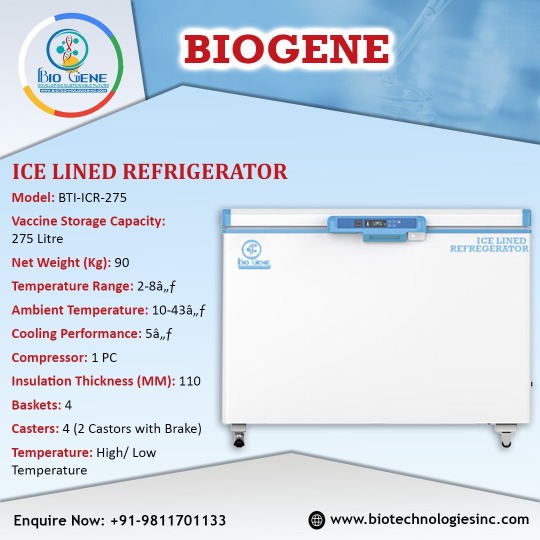
Leading the Way in Advanced Refrigeration Solutions: Biogene Company Presents the Future of Blood Storage and Chromatography with our Front Opening Blood Bank Refrigerator, Ice Lined Refrigerator, and Chromatography Refrigerator.
Click Here For More:- https://bit.ly/3K4EPtE
#BiogeneCompany#FrontOpeningBloodBankRefrigerator#FridgeInnovation#BloodBankEssentials#ColdStorageSolutions#AdvancedRefrigerationTech#PreserveLife#IceLinedRefrigerator#CoolingPrecision#BiomedicalStorage#ColdChainManagement#TemperatureControlled#BloodBankRefrigeration#ChromatographyCooler#LabRefrigeration#BiotechCooling#LifeScienceStorage#InnovativeRefrigeration#BiomedicalSolutions
0 notes
Text
Cold Chain Logistics Market Faces Challenges Amid Rising Need for Sustainable Solutions Worldwide
The cold chain logistics market plays a crucial role in preserving the quality and safety of temperature-sensitive products such as pharmaceuticals, food, and chemicals. As global demand for fresh and perishable goods increases, the cold chain logistics industry has become a vital component in ensuring these products reach their destination in optimal condition. This article explores the dynamics, growth drivers, challenges, and future prospects of the cold chain logistics market.
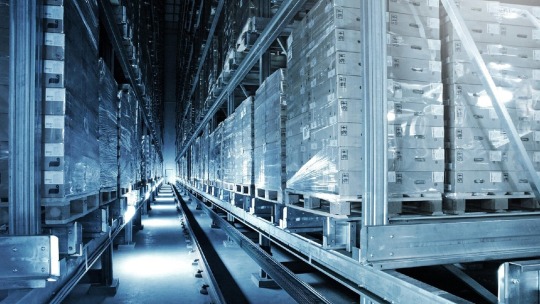
Importance of Cold Chain Logistics
Cold chain logistics refers to the management of temperature-sensitive products through a supply chain that maintains a specific temperature range from production to delivery. This temperature control is critical to preventing spoilage, degradation, and contamination. Industries such as food and beverage, pharmaceuticals, biotechnology, and chemicals heavily depend on cold chain logistics to ensure product integrity.
Market Growth Drivers
Rising Demand for Pharmaceuticals The pharmaceutical sector, especially biologics and vaccines, requires stringent temperature-controlled environments. The COVID-19 pandemic underscored the need for reliable cold chain logistics for vaccine distribution, accelerating market growth. With an increasing focus on personalized medicine and novel biologics, the demand for cold chain logistics solutions is expected to rise steadily.
Increasing Consumption of Perishable Food Products Growing consumer preference for fresh and organic food has led to a surge in demand for cold chain transportation and storage. Fresh fruits, vegetables, dairy products, seafood, and meat require consistent refrigeration during transit. Emerging economies with expanding middle-class populations are driving increased consumption, further boosting the cold chain logistics market.
Technological Advancements Innovations such as IoT-enabled temperature monitoring, GPS tracking, and data analytics have enhanced the efficiency of cold chain logistics. Real-time monitoring allows stakeholders to track temperature fluctuations and intervene proactively, minimizing spoilage and loss. Smart packaging solutions and energy-efficient refrigeration technologies are also making cold chain logistics more sustainable.
Expansion of E-commerce The growth of e-commerce, particularly for fresh groceries and pharmaceuticals, has expanded the cold chain logistics market. Consumers increasingly expect home delivery of temperature-sensitive products, which requires sophisticated cold chain solutions integrated with last-mile delivery networks.
Market Segmentation
The cold chain logistics market can be segmented by product type, service type, end-user industry, and region.
By Product Type: Refrigerated transport vehicles, refrigerated warehouses, and packaging solutions.
By Service Type: Transportation, storage, and warehousing services.
By End-User: Food and beverages, pharmaceuticals, chemicals, and others.
By Region: North America, Europe, Asia Pacific, Latin America, and Middle East & Africa.
Challenges Facing the Market
Despite promising growth prospects, the cold chain logistics market faces several challenges:
High Operational Costs Maintaining refrigerated storage and transport requires significant energy and infrastructure investment, resulting in high operational costs. Fuel consumption for refrigerated trucks and warehouses contributes to expenses and environmental concerns.
Infrastructure Limitations in Developing Regions Many developing countries lack adequate cold chain infrastructure, leading to high wastage of perishable goods. Inadequate roads, electricity supply, and cold storage facilities restrict market penetration and expansion in these regions.
Regulatory Compliance Strict regulations governing the handling and transportation of temperature-sensitive goods can complicate logistics operations. Compliance with local and international standards requires continuous monitoring and documentation, increasing operational complexity.
Environmental Impact Cold chain logistics contributes to greenhouse gas emissions due to refrigeration systems and transportation fuel use. The industry faces growing pressure to adopt greener technologies and sustainable practices.
Future Trends and Opportunities
The cold chain logistics market is poised for significant growth driven by innovation and globalization.
Sustainability Initiatives Adoption of renewable energy sources for refrigeration and electric refrigerated vehicles will reduce environmental footprints. Companies are increasingly investing in eco-friendly packaging and energy-efficient cold storage solutions.
Integration of AI and Big Data Artificial intelligence and big data analytics are expected to revolutionize cold chain logistics by optimizing routes, predicting demand, and ensuring better inventory management. These technologies will improve overall efficiency and reduce waste.
Expansion in Emerging Markets Rising incomes and urbanization in Asia Pacific, Latin America, and Africa will fuel demand for cold chain logistics. Investment in infrastructure and government support will enable market growth in these regions.
Customized Cold Chain Solutions With the diversification of temperature-sensitive products, companies will develop specialized cold chain solutions tailored to specific industry requirements, such as ultra-low temperature logistics for vaccines or controlled atmosphere storage for fresh produce.
Conclusion
The cold chain logistics market is a dynamic and essential sector supporting global trade in temperature-sensitive products. Driven by rising demand in pharmaceuticals and fresh food, technological advancements, and expanding e-commerce, the market offers vast growth potential. However, challenges such as high costs, infrastructure gaps, and environmental concerns must be addressed. Future trends point toward sustainability, digitization, and market expansion, positioning cold chain logistics as a critical enabler of global supply chains.
#ColdChainLogistics#SupplyChain#ColdChain#PharmaceuticalLogistics#FoodLogistics#TemperatureControlled#LogisticsInnovation
0 notes
Text
Why Cold Chain Logistics Is Vital for Your Business in Sydney
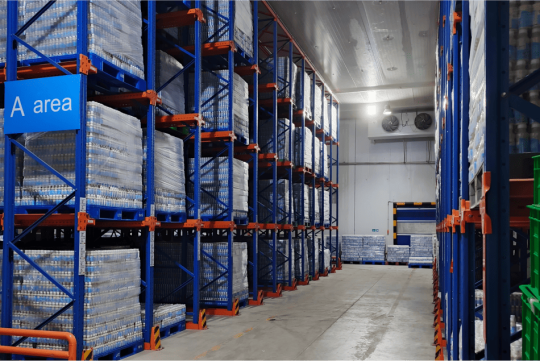
Maintaining the right temperature from origin to destination is no longer optional—it’s critical. Cold chain logistics is the backbone of industries like food, pharmaceuticals, and chemicals, where even minor temperature deviations can lead to spoilage, loss of product integrity, or safety hazards.
At Dardania Group, we specialize in cold chain logistics services in Sydney, offering a seamless solution for businesses that demand temperature precision. Our fully equipped refrigerated fleet, paired with real-time temperature monitoring systems, ensures that your products remain in perfect condition throughout their journey.
Whether you're delivering fresh produce, frozen meats, vaccines, or high-value pharmaceuticals, our team is trained to handle strict compliance requirements, including HACCP standards and time-sensitive schedules. We offer both short-term and long-haul transport services, along with cold storage options to support flexible delivery windows.
Why choose us? Dardania is known for reliability, speed, and tailored logistics solutions. We understand the pressure of Sydney’s fast-moving markets, and we’re here to make sure your supply chain stays cold, consistent, and compliant.
Looking for a trusted cold chain logistics in Sydney? Let’s keep your goods fresh and your customers happy.
#ColdChainLogistics#ColdChain#TemperatureControlled#RefrigeratedTransport#ColdStorage#SupplyChain#Logistics#Warehousing#Freight#Transport#Distribution#TemperatureControl#PerishableGoods#PharmaceuticalLogistics#FoodLogistics#FreshProduce#TemperatureSensitive#Sydney#SydneyLogistics#SydneyColdChain#NSWLogistics#AustraliaLogistics#AustraliaColdChain#dardania logistics
0 notes
Text

#temperature gauges#temperatureregulation#temperaturecontrol#climate crisis#climate change#climate action#climate justice#climate catastrophe#weather#heat#trump#donald trump#president trump#democrats#donald j. trump#fox news#elon musk#dan bongino#news media#fake news#england#london#cnn news#cnn tonight#cnn#msnbc news#msnbc#cbs#ny times#usa today
136 notes
·
View notes
Text

LPS28 - from EYE ON NPI to new product in the fruit shop 🚀🌡️📦
We covered the TI LPS28 on EYE ON NPI a few years ago,
youtube
and we even designed a little breakout for this nice absolute temperature/pressure sensor. But chip prices were still a little nutty, and we didn't want to pay 2x or 3x for the chip. Now prices are reasonable again,
https://www.digikey.com/short/bfd48tt5
and we will send out prototype PCBs to get them into the shop. Coming soon.
#adafruit#lps28#eyeonnpi#newproduct#ti#texasinstruments#comingsoon#sensorengineering#techinnovation#prototyping#makersmovement#electronicsdesign#hardwaredevelopment#pressuremonitoring#temperaturecontrol#circuits#smarthardware#openhardware#engineeringtools#affordabletech#pcbdesign#techupdates#Youtube
9 notes
·
View notes
Text
0 notes
Text
Context: In Ontario (Canada), in July so, height of summer. Outside is hot, 30C. You can go outside in a t-shirt and shorts and still get sweaty just standing there for 10 minutes.
Inside, air conditioner is set to 72F (not sure on what this is in Celcius) and I am FREEZING cold! To the point I am wearing my winter (fuzzy) pants, a sweater and thermal socks, and I am still cold to the touch. Change the thermostat up to 74F or 75F, and I am fine in a t-shirt and regular pants. (After an hour or so of 'warming up')
#autism#autistic adult#autistic coded#autistic community#autistic experiences#poll#questions#autism questions#mental health#temperaturecontrol#temperature sensitivity#tempurature sensitivity
2 notes
·
View notes
Text



6oooooo9.dat
Created by:
Victor Durán - @kh0ler
#webcore#futurecore#databending#glitch art#glitch aesthetic#weirdcore#oddcore#temperaturecontrol#lightcore#glitchartistscollective#glitchcore#glitch#digital art
6 notes
·
View notes